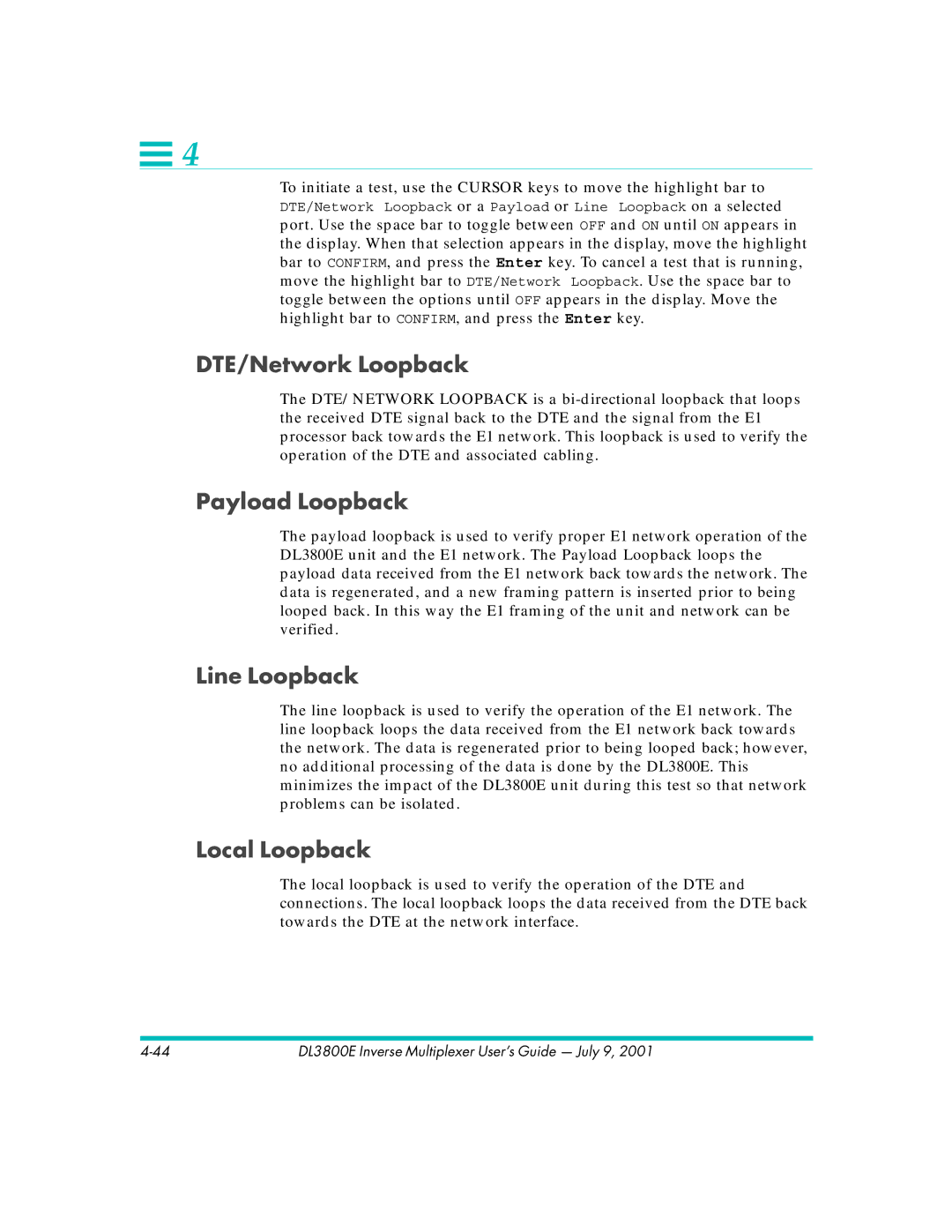
![]() 4
4
To initiate a test, use the CURSOR keys to move the highlight bar to DTE/Network Loopback or a Payload or Line Loopback on a selected port. Use the space bar to toggle between OFF and ON until ON appears in the display. When that selection appears in the display, move the highlight bar to CONFIRM, and press the Enter key. To cancel a test that is running, move the highlight bar to DTE/Network Loopback. Use the space bar to toggle between the options until OFF appears in the display. Move the highlight bar to CONFIRM, and press the Enter key.
DTE/Network Loopback
The DTE/NETWORK LOOPBACK is a
Payload Loopback
The payload loopback is used to verify proper E1 network operation of the DL3800E unit and the E1 network. The Payload Loopback loops the payload data received from the E1 network back towards the network. The data is regenerated, and a new framing pattern is inserted prior to being looped back. In this way the E1 framing of the unit and network can be verified.
Line Loopback
The line loopback is used to verify the operation of the E1 network. The line loopback loops the data received from the E1 network back towards the network. The data is regenerated prior to being looped back; however, no additional processing of the data is done by the DL3800E. This minimizes the impact of the DL3800E unit during this test so that network problems can be isolated.
Local Loopback
The local loopback is used to verify the operation of the DTE and connections. The local loopback loops the data received from the DTE back towards the DTE at the network interface.
DL3800E Inverse Multiplexer User’s Guide — July 9, 2001 |
